Which country invented the game of cricket? History and all the facts
Cricket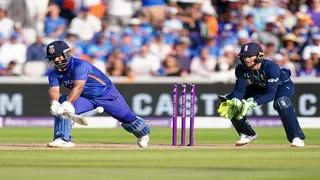
What is the length of the cricket pitch? A standard cricket pitch is 22 yards (20.12 meters). This length is measured between the centres of the two sets of wickets placed at either end of the pitch. The size of the cricket pitch is an essential aspect of the game, as it determines the distance between the bowler and the batsman and also plays a role in determining the boundaries and scoring opportunities.
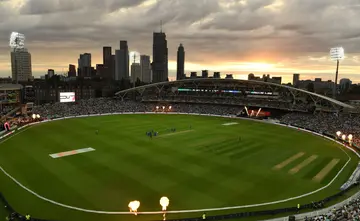
A cricket pitch is a rectangular strip of land where the game of cricket is played. It is an essential part of the sport, and understanding its dimensions and markings is crucial for players and spectators alike. Let us explore the length and width of a cricket field, its different markings, the types of cricket pitches, and the field diagram.
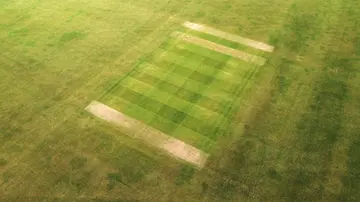
The length of a cricket pitch is 22 yards (20.12 meters) from one set of wickets to the other. The width is 10 feet (3.05 meters). The rise is divided into three main sections: the bowling crease, the batting crease, and the popping crease.
Which country invented the game of cricket? History and all the facts
Cricket
The bowling crease is marked 8 feet 8 inches (2.64 meters) from the stumps at both ends of the field. The batting crease is marked 3 feet 4 inches (1.02 meters) in front of the stumps at both ends. The popping crease is marked 4 feet (1.22 meters) in front of the batting crease on both sides.
The bowling crease is the line from which the bowler delivers the ball. Two lines mark it, every 8 feet 8 inches (2.64 meters) long, drawn perpendicular to the field and in line with the stumps. The batting crease is where the batsman stands while facing the bowler.
Two lines mark it, every 3 feet 4 inches (1.02 meters) long, drawn perpendicular to the field and in line with the stumps. The popping crease is the line that separates the batsman from the fielders. Two lines mark it, every 4 feet (1.22 meters) long, drawn parallel to the batting crease.
How long is a cricket match? Match duration, facts and all the details
Cricket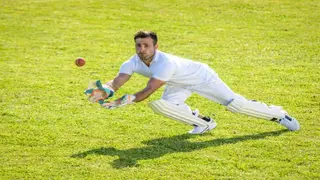
The different markings on cricket fields include the creases. The wide crease is marked outside the popping crease, 1 foot (30.48 centimetres) away from it on either side. The return creases are the lines that extend from the popping crease to the side of the pitch. The markings on a cricket pitch define the playing area and ensure the game is played within the rules.
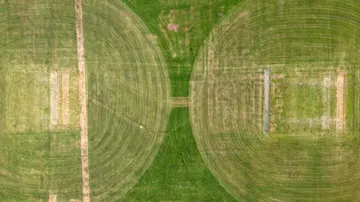
The cricket field diagram illustrates its different markings and dimensions. It is a valuable tool for players, coaches, and spectators, as it helps them understand the layout of the playing area. The diagram shows the location of the creases, the width and length, and the site of the broad and return creases.
The dimensions of a standard cricket pitch are as follows:
Who is the shortest person to ever dunk in the NBA? List of shortest players to ever dunk in the NBA
NBA
These dimensions are standardised by the International Cricket Council (ICC) and are followed in professional matches. Players must understand these dimensions as they are crucial in determining the game's boundaries, run-ups, and other aspects.
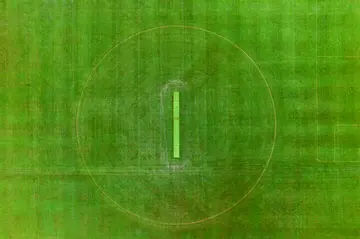
There are several types, each with its characteristics. The most common type is the natural turf, made of grass and soil. Other angles include artificial, synthetic materials and matting made of woven coconut fibres.
Who are the 10 fastest MLB players in the league right now?
Baseball

There are also variations of natural turfs based on the type of soil and grass used. For example, some angles are made of rugged, dry soil favouring fast bowling, while others have softer, wetter ground-leaning spin bowling. The characteristics can also change throughout a match as the surface wears down and becomes more conducive to spin bowling.
The length of the cricket pitch is 22 yards, and its width is 10 feet. The rise is divided into three main sections: the bowling crease, the batting crease, and the popping crease, each with its markings. There are different types of cricket pitches, and a cricket field diagram is a valuable tool for understanding the layout of the playing area. Understanding the dimensions and markings of a cricket pitch is crucial for players and spectators alike, as it ensures that the game is played fairly and competitively within the rules.
What is softball? Rules, history, and facts of the sport
Other Sports
READ ALSO: Who is Wout Weghorst, Manchester United's new signing? Age, height, and stats?
Sports Brief featured Manchester United's new number nine, Wout Weghorst of the Netherlands. The tall striker joined United to replace Cristiano Ronaldo, who moved to Al Nassr in Saudi Arabia.
Wout made mad airwaves in the 2022 Qatar World Cup. His height is perfect for a striker, making him a force to reckon with in the air. Check out the link above for all details about the new striker!